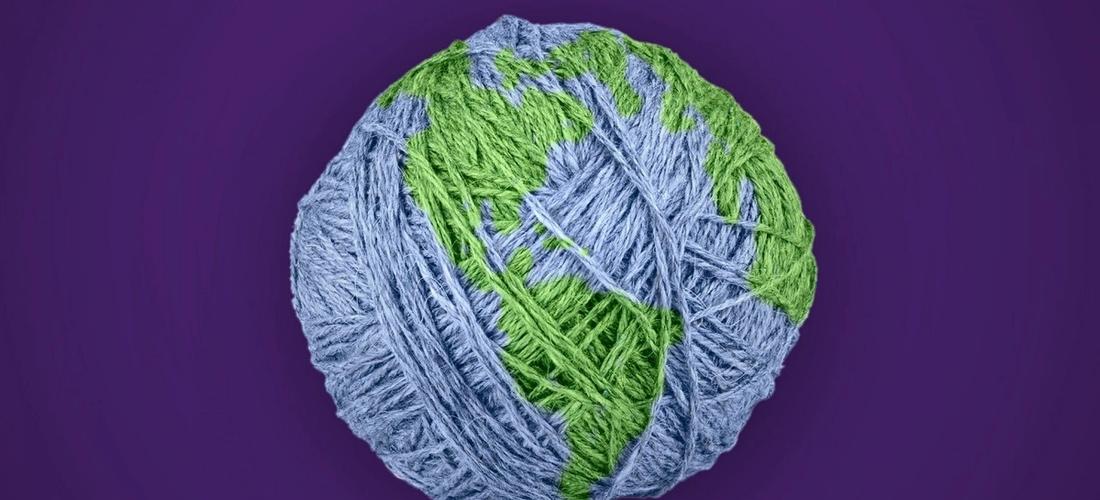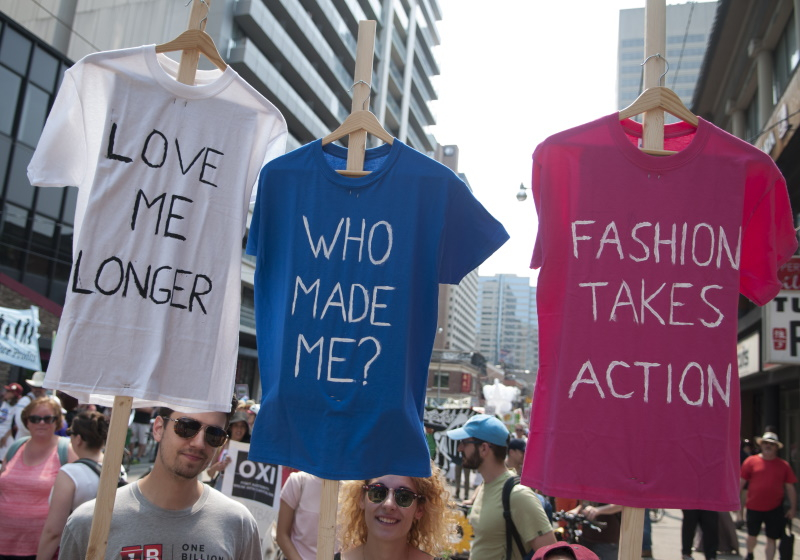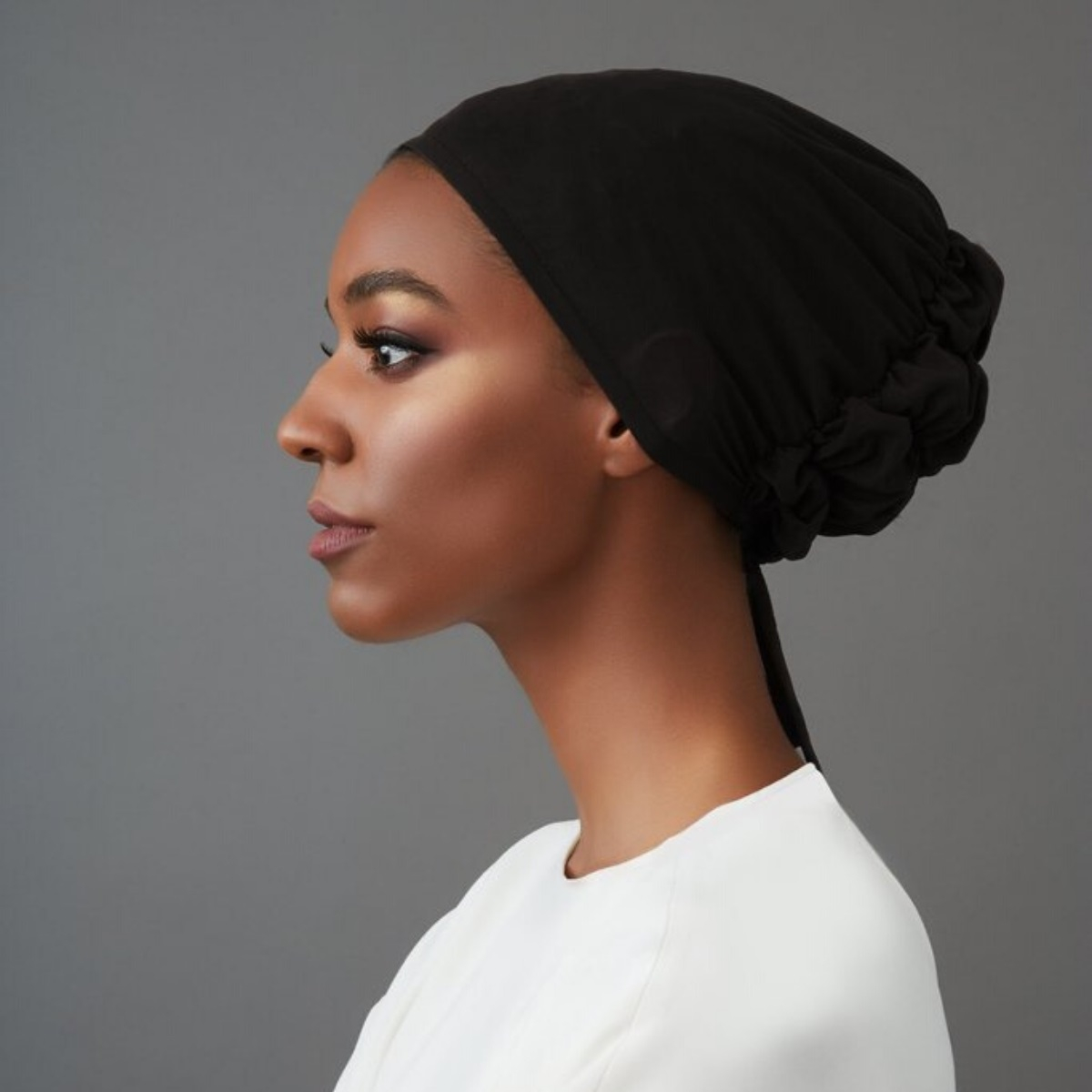What Does Fashion Sustainability Mean? Your Questions Answered
Fashion
|
Sep 14, 2020
|
10 MIN READ

Image source: Fabrikbrand
Sustainability and eco-friendly fashion is something you may have been hearing a lot about in recent years, with many fashion companies making the shift toward producing products in a way that is better for the earth and its people. It has always been an important part of our journey at Haute Hijab as well, and we continue to seek out ways to produce hijabs and accessories with innovative, eco-friendly materials and use ethical and sustainable manufacturing methods.
We know the evolution of sustainability in fashion is something we all are grappling to understand and invest in, and there are a lot of questions around the terms, practices and what it all really means. Insha’Allah this FAQ should answer many of your questions.
I’ve heard of “fast fashion.” What does that mean in comparison to “slow fashion?”
Fast fashion refers to the mass-quantity production of cheap clothes and accessories that often come at the cost of the environment and workers. Because fast fashion demands a near-constant stream of new products to keep up with consumer demand for affordable new trends, this often results in the use of low-cost, environmentally damaging fabrics and unfair, unethical production practices that can harm both workers and the environment in numerous ways.
Slow fashion, as you can imagine, strives to do the opposite. Slow fashion produces clothing and accessories with environmentally conscious materials and ethical manufacturing practices. The practice of slow fashion is a changed mindset in which designers and manufacturers take the time to research and create products that are more eco-friendly and adhere to equitable and fair business practices. Because of the care and time afforded to this entire process, consumers are presented with fashion with a conscious - fashion that has taken care not to be harmful (as possible) to the environment while protecting and treating workers fairly.
What does sustainability in fashion mean?
Sustainability in fashion refers to clothes or accessories that are produced in an ethically, environmentally and socio-economically responsible manner. Sustainable manufacturing practices aim to minimize the harm that clothing production can cause to the earth or to workers. It’s also an umbrella term that addresses a number of issues when it comes to products and manufacturing through every step of the process – from how raw materials are sourced, to the equipment used, to the way in which those throughout the supply chain are treated, to what waste and byproducts come out of the process, to the longevity of the product and its ability to be recycled. The ultimate goal is to steward the entire lifecycle of a garment in ways that minimize or neutralize any negative effects on both people and the planet.
Why should we care about sustainability in fashion?
Sustainable manufacturing is not just important – it is necessary. In order to sustain extremely low price points, fast fashion is typically produced in environments where workers are vulnerable to long hours, poor working conditions and/or insufficient pay. Sustainable fashion, on the other hand, works to ensure workers are paid fairly and work in suitable conditions.
It works to ensure that excess fabrics, fibers and microfibers will not pollute the earth’s oceans or landfills, that fabrics are chosen with care to be biodegradable or recyclable, and that workers are paid fairly and work in suitable conditions. Sustainability in the entire manufacturing process is crucial to help protect the earth’s natural resources and continually assess responsible and eco-friendly practices to harvest natural resources without depleting them.
Sustainable fashion is created in a way that protects our planet and workers, which is our responsibility as privileged consumers. It should not only be seen as the more responsible choice, but the only choice if we want our planet to survive.

What is the difference between “sustainable,” “eco-friendly” and “ethical”?
There are many labels in the sustainable fashion movement. Here are some of them broken down:
1. Ethical: the workers who create the clothing or accessories are paid fairly, their needs are heard, issues are addressed fairly, and they work in suitable conditions.
2. Eco-friendly: the material of the product is made to last while limiting the amount of wasted product and impact to the environment in product production. The raw materials used in manufacturing the product are recycled or renewable.
3. Sustainable: combines both ethical and eco-friendly practices to produce clothing and accessories that are both environmentally and socio-economically responsible.
What are some of the hallmarks or measurements of sustainability when it comes to products?
There are several questions one can ask to determine whether or not a product is sustainable:
1. Was the product made to last (i.e. not fall apart after a few uses)?
2. Was the amount of textile waste limited in the production?
3. Was the environmental impact of production limited as much as possible?
4. Was the product made in compliance with fair labor practices?
5. Does the production process support other ethical factories or businesses?
The answers to all these questions can help you consider the sustainability of a garment.
Are there any regulations or standards when it comes to measuring how eco-friendly or sustainable a company or a product is?
Currently, regulations are blurry at best. Certification to be considered a “sustainable” producer is a voluntary opt-in process that is not mandated for all retailers. In addition, a phenomenon known as “greenwashing,” in which companies falsely claim to be more sustainable than they really are, has become more prevalent and can be difficult to disprove. As the demand for sustainable fashion increases, so too will the demand for more strict regulation and transparency.
There are some certifications out there in fashion, including Global Organic Textile Standard (GOTS), OEKO-TEX and BCI (Better Cotton Initiative), bluesign, Cradle to Cradle and several more. Click here to learn more. These certifications each have their own standards they’ve created to determine if a product meets their certification requirements, as there is no overarching national or global agreed-upon certification as of yet.
Does being more sustainable mean the product is more expensive?
Often, sustainable fashion is perceived as synonymous with higher price tags. This is sometimes true. Careful selection of fair-trade fabrics and concern for the ethics of production can drive up the cost. Sustainable brands also tend to produce smaller quantities and the cost for each item produced in a smaller batch will be higher than those produced by fast fashion brands that leverage their size to drive unit costs down. That said, garments produced with slow, sustainable methods tend to be of higher quality – so while they may cost more up-front, you should be able to wear them longer.
Similar to the organic food movement, as the demand for sustainable fashion increases and industries shift to keep up, the prices will likely decrease. Consumer pressure on fast-fashion retailers to become more sustainable spurs innovative ways to decrease the cost of production while still protecting the environment and workers. Purchasing secondhand clothing is another sustainable and affordable option.
As a consumer, much of our shift to purchasing sustainable clothing, hijabs and accessories is about becoming more mindful of our actions, and taking the time to consider how our purchases affect the workers producing them and their impact on the environment, both short and long term. Another thing to consider is cost-per-wear, meaning how much wear are you going to get out of something you buy?
Are my Haute Hijabs sustainable?

As you’ve probably inferred, there are many factors that go into making a product sustainable. It’s not something you can “set and forget” but a commitment to regularly reviewing every step of a product’s manufacturing and life cycle and finding ways for continuous improvement.
When it comes to sustainability, here are some of the steps we’ve already taken to make our products more sustainable:
1. We source deadstock fabrics to create our printed hijabs. These are fabrics discarded by other manufacturers that would otherwise likely end up in a landfill. Our seasonal Everyday Chiffon colors also are sourced from deadstock fabric, which allows us to bring you specially-curated colors throughout the year in smaller batches in a more earth-friendly way.
2. We scour the market to find the perfect fabrics, and then we test them vigorously to make sure they'll last.
3. We work closely with our manufacturers, consistently checking in with them and their teams to address their needs. We have contractual agreements guaranteeing that they will provide fair pay, reasonable hours, and clean, safe working conditions to their employees.
4. We set price points that enable us to fairly compensate our manufacturing partners, and to invest in materials that last longer, making their efforts all the more worthwhile.
We are proud of the steps we’ve taken thus far as a company and embrace the continued evolution towards using even more sustainable fabrics, technological innovations and more.
What steps is Haute Hijab taking to be more sustainable?
Our Haute Hijab story begins with vintage scarves – sourcing them from thrift stores and beautifully repurposing them into quality hijabs for our customers. As HH grew, we moved to sourcing prints from deadstock fabric – an industry term for excess or discarded fabric from other brands that would otherwise end up in landfills. But that was just the beginning.
As we continue to grow, we are intent on investing in eco-friendly, innovative materials and processes to advance our rigorous quality standards and more environmentally-friendly products by expanding our partnerships with other like-minded vendors and improving upon our own manufacturing processes in our Dubai-based factory. Our Ultimate Underscarves, new bamboo Woven Collection and Haute Hijab Sport line are the fruits of this ongoing labor.
How will the new hijabs compare to the tried and true Haute Hijabs I already own?
High quality, durability and beauty are our top priorities for every hijab, and that won’t change as we incorporate more sustainably-produced materials into our catalog. The sheer amount of research and vetting of suppliers and manufacturers who also work ethically is a huge part of our work, which is why it takes so much time to finally produce hijabs that are sustainable and high quality and beautiful, all while trying to maintain fair price points that are as accessible to you as possible. We rigorously test our new sustainable hijab lines to make sure they are comfortable, high-quality and will stand up to regular wash and wear. We are committed to ensuring that each new, more sustainable line is the same or better than what you’ve come to expect from us.
Should I care for the new fabrics differently?
No. You can continue to wash your hijabs in the delicate cycle in warm water, and either tumble dry or hang to dry. Be aware that soft, natural fibers are inherently delicate and can break down more quickly than synthetics like polyester or semi-synthetics like rayon. To extend the life of your hijabs as much as possible, we recommend hand-washing – and it’s a must for the most delicate fabrics like silk.
Why is sustainability important in modest fashion?
Sustainable fashion is important in modest fashion for many of the same reasons that it is important in fashion in general. However, as Muslims, our responsibility to protect the planet that Allah (S) gave us as well as the workers who produce our clothing, is even greater. In order to please Allah (S), it is important that we are more conscious of the decisions we make as consumers, and this includes the decision to purchase more sustainable and ethically-produced products.
Besides purchasing more sustainable items, what can we as consumers do to be more sustainable in our clothing choices?
Before you let go of your current wardrobe and start finding sustainable replacements, don’t! At its core, sustainability is about doing more with less. You can start by loving the clothes you currently have, and if you need to part with them, do so in a thoughtful way rather than throwing them in the trash (more on that in the next question). If you haven’t worn an item in awhile because it has a hole or snag, try to mend or fix it. If it doesn’t fit, give it to someone who can use it. If you feel like it no longer fits your style, see if there is another way to wear it, or get crafty and try altering it!
Too many of us have filled our closets with items we don’t wear. By cultivating a practice of caring for our clothes, mending them when needed and rediscovering pieces we already have, we reduce the need to purchase new items.
How important is recycling clothing or hijabs in reducing landfill waste or helping our environment?
Very important! There are many ways to get rid of old clothing, and not all of them are sustainable. Unless you are completely certain that a garment is 100 percent natural, down to the fibers, threads and dye, it should not go in the trash.
Gently used items can be sold to consignment shops, swapped with friends or donated to charity organizations and thrift stores. More tattered garments can be cut up to use as rags around the house or reimagined as craft projects. Many clothing brands such as H&M and Eileen Fisher now offer clothing recycling at their stores – and might even give you a discount if you bring items in! There are also a growing number of textile recycling organizations that will help you discard old clothes safely; they tend to be quite localized, so the best way to find them is to do a search for clothing recycling in your area.
Gently used items can be sold to consignment shops, swapped with friends or donated to charity organizations and thrift stores. More tattered garments can be cut up to use as rags around the house or reimagined as craft projects. Many clothing brands such as H&M and Eileen Fisher now offer clothing recycling at their stores – and might even give you a discount if you bring items in! There are also a growing number of textile recycling organizations that will help you discard old clothes safely; they tend to be quite localized, so the best way to find them is to do a search for clothing recycling in your area.
We’re excited to be bringing you more sustainable hijabs, and we hope that this FAQ about sustainable fashion and our new Haute Hijabs will inspire you to make choices that protect both the planet and its citizens.
Subscribe to be the first to know about new product releases, styling ideas and more.
What products are you interested in?

